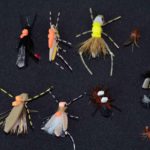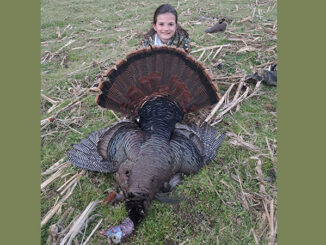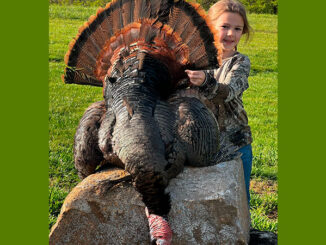
Go big for big fish; upsize flies to take big trout.
Picturesque streams in North Carolina’s mountains pour down from higher elevations, and often, they have a trout lurking behind every rock and gravel bar and under every undercut bank, waiting for something tasty to flow across their dinner plate.
While they typically make a living off thousands of tiny, aquatic insects, summer brings bigger meals to their lunch rooms in the form of terrestrials, and fishermen can have a blast slinging around flies that match those bigger bugs.
Streams can hold native brook trout as well as populations of stocked or wild rainbows, browns and brookies. They may live in different types of habitat and have different feeding habits, but few will pass up a large, tasty meal, and that’s what often slides past them during the summer: grasshoppers, crickets, flying ants, beetles, worms and flying insects.
Justin Anderson of Fontana Guides in Bryson City gets excited when summer arrives and the terrestrial flies can come out of the tackle box.
“Terrestrials become available from early summer into the early fall,” said Anderson (828-736-2318). “Grasshoppers, beetles, ants, flying ants and inchworms are some of the common insects we see.”
Trout begin to key on these bigger, nutritional food sources, and they’ll feed on them throughout the day, unlike traditional aquatic insects that offer trout a food source only for limited times. While they eat a variety of foods at different places in the water column, they are always looking up, conditioned to tasty things floating downcurrent. They instinctively know when terrestrials begin to show up, and they start scanning the surface for these king-sized groceries.
Anderson will use a variety of terrestrial patterns over the summer, but he chooses specific flies based on the habitat and the time of season.
“I start seeing green inchworms around June, along with hoppers, flying ants and beetles,” he said. “The green inchworms are a great food source for trout. Look for them as well as ants hanging off tree limbs along wooded banks.”
In grassy areas, Anderson chooses patterns that mimic critters like grasshoppers, crickets and beetles that live in the greenery along the stream banks in meadow settings or anywhere banks are void of excessive woody cover.
“Trout are opportunist feeders and the look at the silhouette of a surface fly. They will eat a properly presented pattern with a good silhouette of what you are trying to mimic,” said Anderson, who keeps his choice of flies simple.
“I like simple fly patterns,” he said, “foam hoppers or any basic hopper in yellow or brown and any basic ant pattern work really well (in grassy areas).”
For imitating inch worms, he uses green weenie, green squirmy wormy, or green San Juan worms. The most important aspect when choosing flies for Anderson is not what is on the hatch chart, but what he actually sees.
“Always be observant on what is going on around you. It’s common sense fishing. Keep it simple,” he said.
One thing Anderson pays close attention to is whether or not the banks around stream might hold a population of rodents, specifically field mice. If they do — grassy banks are usually full of them — Anderson will use a mouse pattern early and late.
Mouse patterns are generally huge compared to dry flies, and they are generally restricted to fishermen targeting largemouth bass or, up north, northern pike. Where most fly fishermen rarely consider using flies larger than a No. 8, summer mouse patterns from No. 6 to 2/0 can be deadly, especially on bigger-than-average trout lurking in the shadows.
“Mice are something folks don’t really think of when it comes to trout fishing in the mountains,” said Anderson, “but it can bring an explosive strike and usually from a large fish!”
Because mice can swim fairly well and quickly, Anderson said fishermen should fish imitation mice with a stripping retrieve to give them a more realistic action. When gearing up for mouse flies, anglers need to utilize heavier action rods to handle casting the large flies. Anderson recommends using a 9-foot, 5- or 6-weight rod, which helps not only in casting bigger flies, but provides the little extra backbone needed to get a big trout into the net.







Be the first to comment